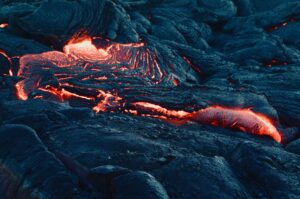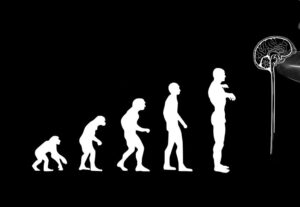the emergence of Life
how did life originate and evolve?
In this section, you will learn how life originated and evolved throughout the earth’s history. This was the time when simple organisms slowly evolved into complex organisms like humans. You learn how the earth’s surface and climate evolved over time which made it a hospitable place to live. You will learn about:
- The Earth Early Environment
- Origin of Life and The Last Universal Common Ancestor
- The Great Oxidation Event
- Plate Tectonics: Shaping the Earth’s Future.
- The Complex Organisms
- Multicellular Organisms
- The Explosion of Life
- Extinction of Dinosaurs
- The Emergence of Primates
There was a lot of volcanic activity, and volcanoes spew out gases, which create the atmosphere. As a result, the early atmosphere was most likely constituted of carbon dioxide, nitrogen, ammonia, methane, and water vapour. There was no free oxygen in the early Earth's atmosphere, which may have been crucial because oxygen is extremely disruptive. Complex organic compounds can accumulate and remain stable in the absence of oxygen. As a result, we may wind up with high concentrations of them in the early ocean.
The first oceans were a dense soup of billions of various chemical substances. These basic blocks came together over 100 million years to form the complex chemicals we see in living things today. As a result, amino acids came together to form proteins. The most important result was the formation of nucleic acids. This is called as RNA.
Early proteins in the prebiotic soup were discovered to be able to form associations with other complex molecules, and when heated and cooled, they spontaneously form microspheres. These are little spherical structures with cell-like characteristics. They have the ability to gather material from the primordial seas. They grow when they do this. They have the ability to divide when they become too large. These are similar to cells.
Over the course of 100 million years between 3.9 and 3.8 billion years ago, the replication and information storing functions of RNA were eventually replaced by the molecule that all living things now call DNA.
The single cell is referred to as the last universal common ancestor. The original type of cell most likely obtained energy and resources by capturing organic compounds found in the early ocean. Errors in the replication of that DNA result in variety. As a result of the replication, the cells' roles are altered. Natural selection feeds off of this diversity. Natural selection can favour cells that grow quicker or employ more diversified substances, and this is what evolution is all about.
Characteristics of organisms were governed by what he referred to as genes. Genes are made of DNA, and DNA is similar to a set of instructions for making an organism. Variations in DNA sequence produce differences in how we look and behave. When DNA replicates, these changes are caused by mutation and changes in DNA can cause disparities in colour, form, or height.
Archaebacteria were the first primitive prokaryotic cells to emerge in the ocean around 3.8 billion years ago, living primarily in the harsh conditions of primitive oceans.
Bacteria produce a protective organic substance known as exopolysaccharides while growing in stressful atmospheric conditions, which binds all the bacteria together to form a large slimy mat known as "biofilms." The capability of forming colonies gave them an opportunity to come close to one another and form protective rock-like structures capable of photosynthesis during the Archean aeon period. These specialized structures are known as "Stromatolites." These colonies allow them to share food and growth materials during times of difficulty or in a harsh environment.
The lithosphere, a planet's solid outermost shell (the crust and upper mantle), is divided into numerous huge continental and ocean-sized plates, as well as several smaller ones. These plates move relative to one another at rates ranging from 5 to 10 cm per year, interacting along their boundaries as they converge, diverge, or slip past one another. The majority of Earth's seismic and volcanic activity is assumed to be caused by such interactions. Mountains rise where plates press together, or converge, whereas continents fracture and seas form where plates pull apart, or diverge. The continents are anchored in the plates and drift passively with them, resulting in dramatic changes in Earth's geography over millions of years. The movement of significant sections of Earth's crust have contributed to the planet becoming more hospitable to life.
Eukaryotes are the organisms that are characterized by their complex cells that contain a true nucleus and other membrane-bound organelles, and they are believed to have evolved from prokaryotes (bacteria and archaea) between 2.5 and 1.5 billion years ago. The engulfed aerobic bacterial cell might have facilitated the host's use of oxygen to break down food and generate energy, and in turn, the Archea might have protected the bacterial cells from the predators. The increased concentration of oxygen in the atmosphere might have been a survival challenge for many Archaebacteria of that time, which later triggered the evolution of aerobic respiration, which is a more efficient form of metabolism that requires oxygen.
Single-celled protists were the first eukaryotes to reproduce sexually. Asexual reproduction produces offspring who are genetically identical to their parents. Any genetic mutation passed down from previous generations could be deadly to the next generation if not rectified or reduced. Sexual reproduction results in a new genotype with a good fault tolerance mechanism for numerous molecular processes such as DNA repair and complementation. It also raises an individual's tolerance ability to any pathogenic attack that impacts them genetically.
The first multicellular organisms likely originated around 1 billion years ago during the Proterozoic Era. The exact process of how multicellularity evolved is believed to have arisen through a combination of genetic and environmental factors. Multicellularity may have been evolved through the formation of colonies of single-celled organisms that eventually evolved into specialized cells with different functions within the colony. It is also possible that multicellularity arose through the fusion of individual cells, which then began to work together as a single entity. Another possibility is that multicellularity evolved through the symbiotic relationships between different single-celled organisms, with each organism specializing in specific functions. Ultimately, it is likely that a combination of these mechanisms contributed to the evolution of multicellular organisms.
During the Late Silurian and Early Devonian periods, there was gradual colonization of land by aquatic organisms that adapted to living on land over time. The first land-dwelling organisms were likely simple, multicellular plants, such as mosses and liverworts. These plants were able to survive on land by developing specialized structures such as roots, stems, and leaves that allowed them to absorb water and nutrients from the soil.
Over millions of years, these simple land plants evolved into more complex forms, such as ferns and gymnosperms. This in turn allowed for the emergence of more complex land animals, including arthropods, amphibians, and eventually mammals.
The leading theory for their extinction is an asteroid impact, which caused a global catastrophe. The asteroid, estimated to be about 10-15 kilometers in diameter, struck the Earth with an enormous amount of force, releasing energy equivalent to billions of atomic bombs. The impact created a massive dust cloud that blocked out sunlight and caused a "nuclear winter" effect, causing the extinction of many forms of life, including the dinosaurs.
The extinction of the dinosaurs around 65 million years ago cleared the way for mammals to become the dominant land animals, and they continue to thrive today in a wide variety of environments.
The evolution of early primates can be traced back to the late Cretaceous period, around 75-65 million years ago, with the emergence of a group of mammals known as plesiadapiforms. These mammals had a number of primate-like features, such as grasping hands and feet, sharp teeth, and a large brain relative to body size.
The last common ancestor of chimpanzees and humans is believed to have existed around 6-7 million years ago. This ancestor is thought to have been a primate species that lived in Africa and was the common ancestor of both chimpanzees and humans. It is believed to have been a small, arboreal mammal with a similar body shape and brain size to modern chimpanzees. The exact identity of this ancestor is still unknown, but several extinct primate species, such as Sahelanthropus, Orrorin, and Ardipithecus, have been proposed as potential candidates.


